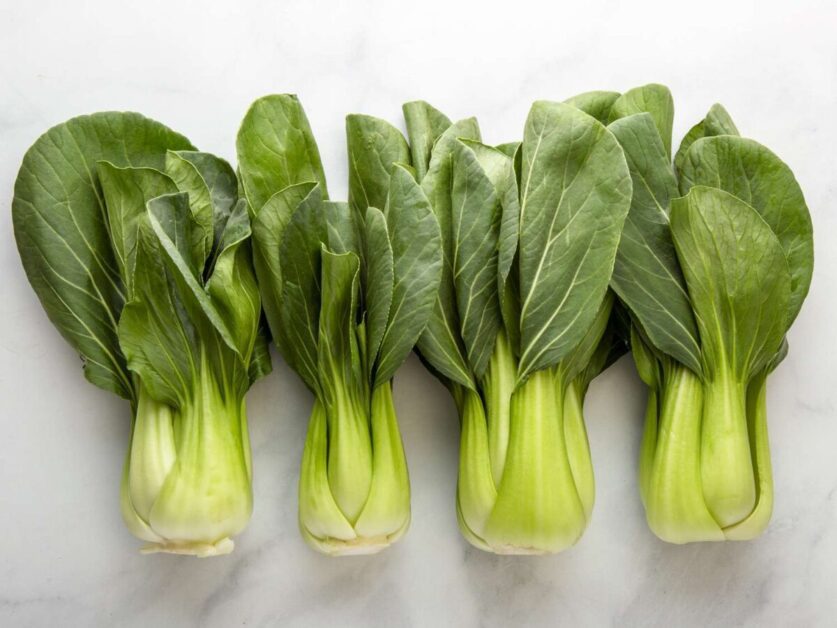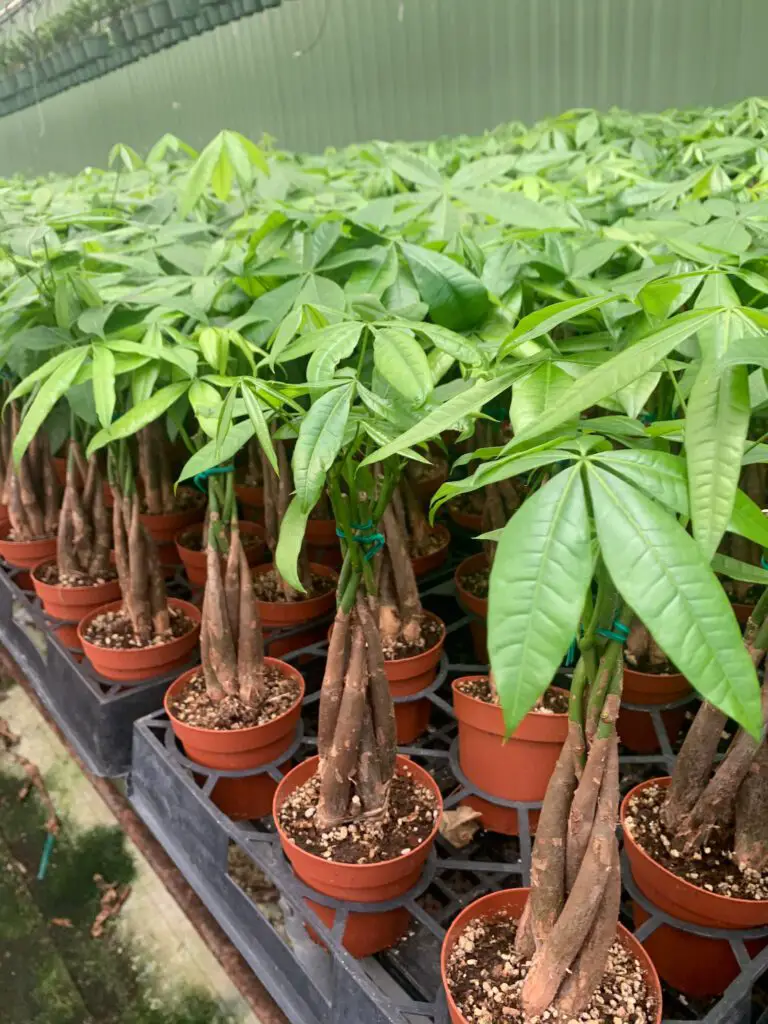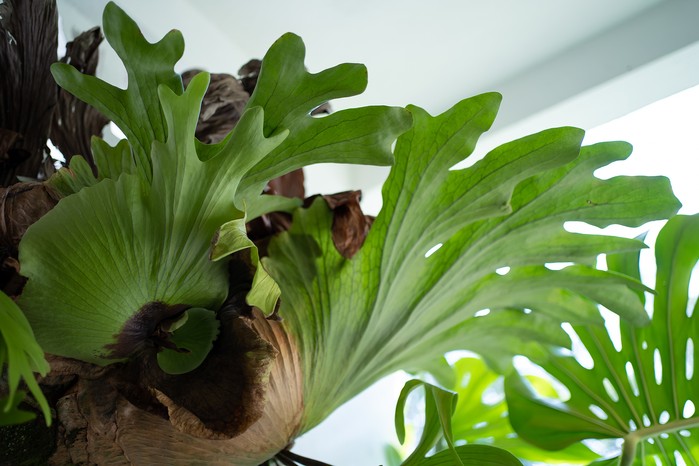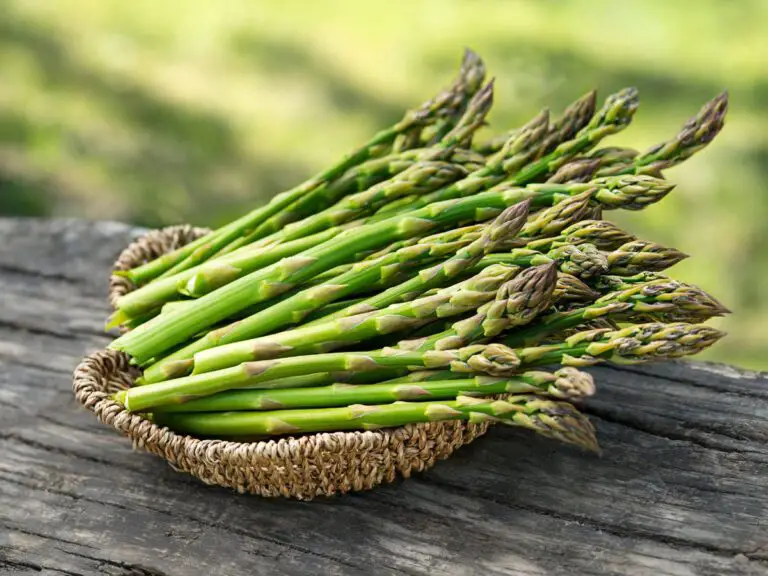Nurturing Bok Choy: The Best Stir Fry Superstar
Table of Contents
Benefits of Adding Bok Choy to Your Diet
Bok choy, also known as Chinese cabbage, is a nutrient-dense vegetable that can be a valuable addition to your diet. Packed with vitamins A, C, and K, as well as essential minerals like calcium and potassium, bok choy offers a range of health benefits. Its high antioxidant content may help reduce inflammation in the body and support overall immune function. Moreover, bok choy is low in calories and carbohydrates, making it a great choice for those looking to maintain a healthy weight or improve their blood sugar control.
Incorporating bok choy into your meals can also contribute to better digestion due to its high fiber content. Fiber plays a crucial role in supporting gut health and promoting regular bowel movements. Additionally, bok choy contains compounds like glucosinolates, which have been linked to potential cancer-fighting properties. By including bok choy in your diet regularly, you can enhance your nutrient intake and work towards improving your overall well-being.
Growing Bok Choy in Your Garden
Bok choy, a nutrient-rich leafy green vegetable, can be successfully grown in home gardens with the right care and conditions. This Asian green, belonging to the cabbage family, thrives in cool weather and can be grown in both traditional soil beds and hydroponic systems. Providing ample sunlight, well-drained soil or nutrient-rich hydroponic solution, and regular watering are essential for the successful cultivation of bok choy in your garden. Additionally, maintaining proper spacing between plants to allow for optimal growth and air circulation can prevent diseases commonly associated with overcrowding in the garden.
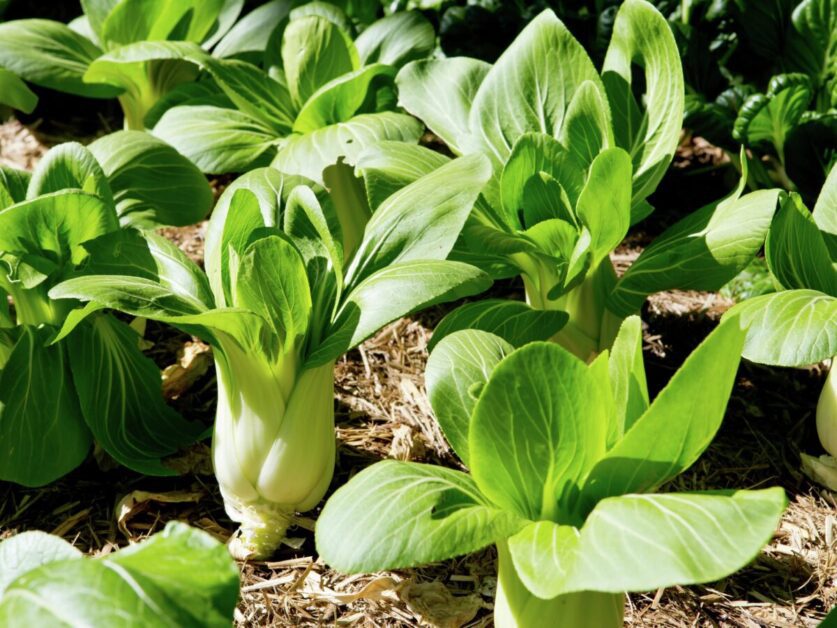
When planting bok choy in your garden, consider staggering the planting schedule to ensure a steady supply of fresh greens throughout the growing season. By planting new batches every few weeks, you can enjoy a continuous harvest of tender bok choy leaves without facing a surplus all at once. This method also helps in managing pests and diseases that may affect a large, single crop. Incorporating bok choy into your garden not only provides you with a fresh and nutritious ingredient for your meals but also adds versatility and diversity to your homegrown produce selection.
Understanding the Nutritional Value of Bok Choy
Bok choy, also known as Chinese cabbage, is a leafy green vegetable that is a nutritional powerhouse. This versatile vegetable is low in calories and high in essential nutrients, making it a valuable addition to any diet. A single cup of cooked bok choy provides around 34% of the daily recommended intake of vitamin C, which is crucial for immune function, skin health, and collagen production. Additionally, bok choy is a good source of vitamin A, which supports vision health, as well as vitamin K, important for blood clotting and bone health.
In addition to vitamins, bok choy is rich in minerals such as calcium, magnesium, and potassium, necessary for maintaining healthy bones, heart function, and muscle contractions. Furthermore, bok choy contains antioxidants like beta-carotene and lutein, which help protect cells from damage and reduce the risk of chronic diseases. Its high fiber content supports digestive health and may aid in weight management by promoting satiety. With its impressive array of nutrients, bok choy is a wholesome vegetable choice that can contribute to overall well-being when incorporated into a balanced diet.
Tips for Selecting and Storing Fresh Bok Choy
When selecting fresh bok choy, look for crisp, vibrant green leaves with firm stalks. Avoid any browning or wilting, as this indicates older or lower-quality produce. Opt for bok choy that feels heavy for its size, as this signifies moisture content and freshness. Additionally, choose bunches with minimal yellowing or spotting on the leaves, as these could indicate age or damage.
To store fresh bok choy, wrap the unwashed heads loosely in a damp paper towel and place them in a perforated plastic bag in the vegetable crisper drawer of your refrigerator. Proper storage helps maintain the crispness and flavor of bok choy for several days. Avoid washing bok choy until you’re ready to use it to prevent excess moisture that can lead to quicker spoilage. By selecting and storing bok choy correctly, you can ensure the best quality and taste in your dishes.
The Best Cooking Methods for Bok Choy
When it comes to cooking bok choy, there are several methods that can help preserve its delightful crunch and distinct flavor. One of the best ways to prepare bok choy is by stir-frying it quickly over high heat. This method retains the vegetable’s crisp texture while infusing it with delicious seasonings and sauces. Simply heat a wok or skillet with oil, add in chopped bok choy, and stir-fry for a few minutes until the leaves start to wilt slightly but remain vibrant.
Another excellent cooking method for bok choy is steaming, which helps the vegetable retain its nutrients and natural flavors. Steaming bok choy is a gentle way to cook it without losing its crispiness. Simply place the bok choy in a steamer basket over boiling water and cover to let it steam for a few minutes until tender but still slightly crunchy. Steamed bok choy can be enjoyed as a side dish or added to soups and stir-fries for a healthy boost of greens.
Pairing Bok Choy with Other Ingredients in Stir Fry Dishes
When it comes to creating a flavorful and nutritious stir fry dish, bok choy can be a versatile and vibrant addition that pairs well with a variety of ingredients. Its crunchy texture and slightly bitter flavor can complement the richness of proteins like chicken, beef, or tofu. Additionally, bok choy’s high water content can help balance out the dish’s overall mouthfeel, adding a refreshing element to the mix.
Incorporating aromatics like garlic, ginger, and green onions can elevate the flavor profile of your stir fry featuring bok choy. These ingredients not only provide depth and complexity but also offer health benefits such as antimicrobial properties and digestive support. To add a touch of sweetness, consider including bell peppers or carrots in your stir fry, enhancing the overall harmony of flavors while providing a pop of color.
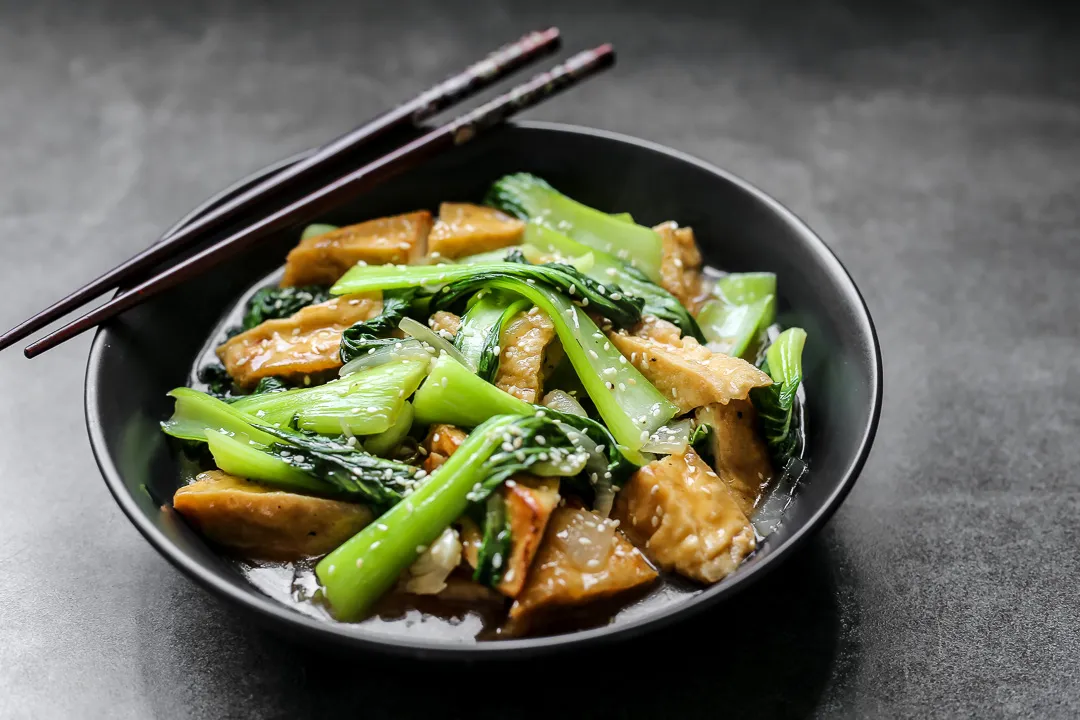
Exploring Different Asian-Inspired Bok Choy Recipes
When it comes to Asian-inspired dishes featuring bok choy, the possibilities are truly endless. One popular recipe is a classic stir-fry that combines the crisp texture of bok choy with savory sauces and tender meats or tofu. The key to a successful stir-fry is to cook the bok choy briefly to maintain its crunchiness and vibrant green color, while allowing the flavors of the other ingredients to meld together harmoniously.
Another delightful way to incorporate bok choy into your Asian culinary adventures is by adding it to traditional noodle soups. Whether it’s a comforting bowl of ramen or a fragrant bowl of pho, bok choy adds a fresh, slightly bitter contrast to the rich broth and hearty noodles. Its mild flavor allows it to complement the other components of the soup without overpowering them, making it a versatile and nutritious addition to any noodle dish.
Health Benefits of Consuming Bok Choy Regularly
Bok choy, a leafy green vegetable rich in vitamins A, C, and K, offers numerous health benefits when consumed regularly. Its high nutrient content makes it a valuable addition to a balanced diet, aiding in boosting immunity and promoting overall well-being. Bok choy is also a good source of antioxidants, which help protect cells from damage caused by free radicals and can reduce the risk of chronic diseases.
Furthermore, incorporating bok choy into your meals can support a healthy digestive system due to its fiber content. Fiber promotes regular bowel movements and can prevent constipation, contributing to improved gut health. Additionally, bok choy is low in calories but high in essential minerals like calcium and potassium, making it a smart choice for those looking to maintain a healthy weight while meeting their nutritional needs.
The table below shows us the nutritional benefits of bok choy:
| Health Benefit | Description |
|---|---|
| Rich in Nutrients | Bok choy is packed with essential vitamins and minerals such as vitamin C, vitamin K, vitamin A, calcium, potassium, and iron. |
| Antioxidant Properties | It contains antioxidants like vitamin C, which help protect cells from damage caused by free radicals and reduce the risk of chronic diseases. |
| Bone Health | Bok choy is an excellent source of vitamin K, which is crucial for bone health as it helps in calcium absorption and may reduce the risk of osteoporosis. |
| Heart Health | Its high potassium content supports heart health by regulating blood pressure and reducing the risk of stroke. |
| Eye Health | Bok choy is rich in vitamin A, which is essential for maintaining good vision, especially in low light conditions, and may help prevent age-related macular degeneration. |
| Digestive Health | Being high in fiber, bok choy promotes digestive health by supporting regular bowel movements and preventing constipation. |
| Weight Management | With its low calorie and high fiber content, bok choy can help you feel full for longer periods, aiding in weight management and controlling cravings. |
| Immune Support | The presence of vitamin C in bok choy helps boost the immune system, reducing the risk of infections and aiding in wound healing. |
Creating a Balanced Meal with Bok Choy as a Main Ingredient
Bok choy, with its crisp texture and mild flavor, can serve as a fantastic base for creating a well-balanced meal rich in nutrients. When incorporating bok choy as a main ingredient, consider pairing it with lean proteins such as chicken, tofu, or shrimp for a satisfying dish that offers a good source of essential amino acids. Additionally, adding whole grains like brown rice or quinoa can further enhance the nutritional profile of the meal by providing fiber, vitamins, and minerals essential for overall health.
To elevate the flavors of a bok choy-centered meal, experimenting with a variety of seasonings and herbs can enhance the dish without compromising its nutritional value. Consider using garlic, ginger, soy sauce, and a dash of sesame oil to infuse the dish with savory umami notes. By combining different textures, colors, and flavors, you can create a visually appealing and palate-pleasing meal that not only satisfies your taste buds but also nourishes your body with a well-rounded array of nutrients.
Incorporating Bok Choy into Your Meal Prep Routine
When it comes to incorporating bok choy into your meal prep routine, this versatile vegetable can be a great addition to a variety of dishes. One simple way to include bok choy in your meal prep is by adding it to stir-fries or soups. Its crunchy texture and mild flavor make it a perfect complement to other ingredients, adding a nutritional boost to your meals.
Another way to incorporate bok choy into your meal prep routine is by experimenting with different cooking methods. Whether you prefer steaming, stir-frying, or even adding it raw to salads, bok choy can be a delicious and healthy addition to any meal. By trying out various cooking techniques, you can discover the best way to highlight the natural flavors of bok choy while retaining its nutritional value.
Bok Choy: A Versatile Vegetable for Various Cuisines
Bok choy is a versatile vegetable that lends itself well to a variety of cuisines, adding a unique flavor and texture to dishes. This leafy green vegetable is commonly found in Asian cuisine but can also be incorporated into Western recipes, providing a fresh and crisp addition. Whether stir-fried, steamed, or added raw to salads, bok choy offers a mild yet slightly peppery taste that complements a wide range of ingredients.
With its high water content and tender stems, bok choy cooks quickly and can be used in a multitude of ways in the kitchen. From soups and stews to noodle dishes and even as a side dish, this vegetable brings a subtle sweetness and crunch to the table. Its versatility allows for endless culinary creativity, making it a standout ingredient for those looking to explore new flavors and textures in their cooking.
How to Properly Clean and Prepare Bok Choy for Cooking
To properly clean and prepare bok choy for cooking, start by separating the individual leaves from the stalk. Rinse the leaves under cool running water, gently rubbing them to remove any dirt or debris that may be lingering. Next, trim off the tough ends of the stalk and cut the bok choy into your desired size for the dish you are preparing. Remember to also make use of the bok choy stalks, as they add a delightful crunch and flavor to your meals.
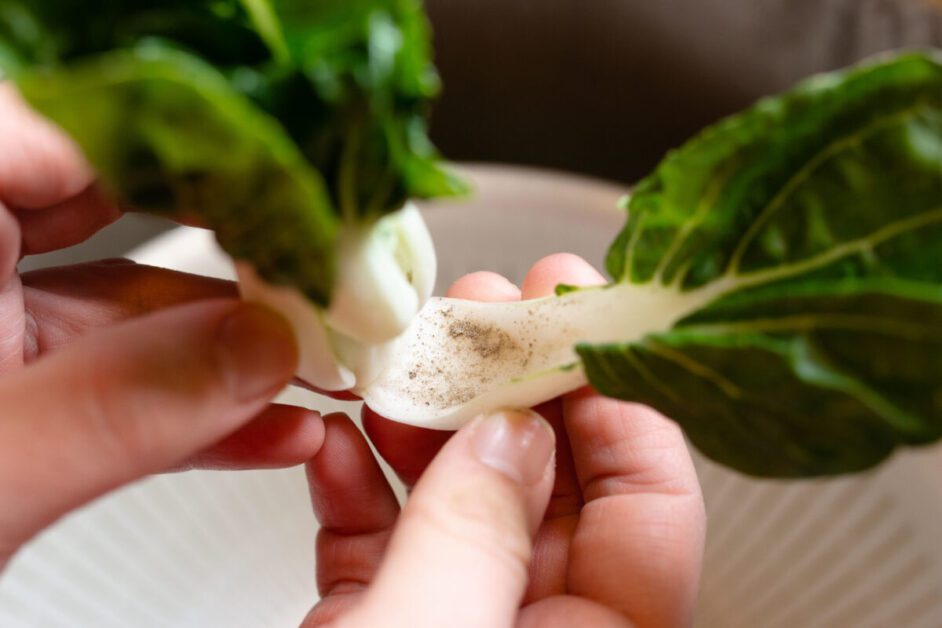
Once your bok choy is cleaned and prepped, it is ready to be incorporated into a variety of dishes. Whether you choose to stir fry, steam, sauté, or even add it raw to salads, bok choy’s mild flavor and versatility make it a fantastic addition to any meal. Experiment with different cooking methods and seasonings to bring out the best in this nutritious leafy green vegetable. By following these simple steps, you can elevate your culinary creations with the addition of fresh and vibrant bok choy.
Bok Choy: A Budget-Friendly Superfood Option
Bok choy, a leafy green vegetable rich in vitamins and minerals, offers a budget-friendly option for those looking to enhance their diet with nutrient-dense foods. With its affordability and versatility, bok choy stands out as a superfood that can be easily incorporated into various culinary creations. This nutrient-packed vegetable not only adds vibrant colors and textures to dishes but also contributes to a well-rounded meal without breaking the bank.
Whether you decide to stir-fry, steam, or add bok choy to soups and salads, this vegetable serves as a cost-effective way to boost your nutrient intake while tantalizing your taste buds. As a budget-friendly superfood option, bok choy provides an excellent source of vitamins A, C, and K, as well as essential minerals like calcium, potassium, and iron. By including bok choy in your regular meal planning, you can enjoy the benefits of its nutritional content without compromising on flavor or your budget.
The Environmental Benefits of Growing Bok Choy at Home
Growing bok choy at home not only provides you with a fresh and nutritious addition to your meals but also comes with several environmental benefits. By cultivating bok choy in your own garden, you contribute to reducing the carbon footprint associated with transporting produce from farms to supermarkets. Additionally, growing bok choy at home allows you to have better control over the use of pesticides and chemicals, promoting a more sustainable and eco-friendly approach to food cultivation.
Incorporating bok choy in your home garden can also help in preserving water resources. Unlike traditional farming practices that may involve excessive water usage, cultivating bok choy at home gives you the opportunity to implement water-saving techniques such as drip irrigation or hydroponics. By optimizing water efficiency in your bok choy cultivation, you not only conserve this precious resource but also play a part in environmental conservation and sustainable gardening practices.
Here a table is given below to shows what are the benefits of growing bok choy at home:
| Environmental Benefit | Description |
|---|---|
| Reduced Food Miles | Homegrown bok choy reduces the distance food travels, lowering carbon emissions. |
| Decreased Packaging Waste | Less packaging is needed for homegrown produce, reducing plastic and waste. |
| Conservation of Resources | Cultivating bok choy at home conserves water, energy, and other resources used in commercial farming. |
| Minimized Pesticide Use | Organic gardening methods can reduce reliance on synthetic pesticides, lessening environmental pollution. |
| Biodiversity Preservation | Home gardens provide habitat for wildlife, promoting biodiversity and a balanced ecosystem. |
| Soil Health Improvement | Organic fertilizers and compost improve soil health without chemical inputs, benefiting the environment. |
| Reduction of Food Waste | Harvesting only what is needed minimizes food waste, preventing spoilage and reducing waste. |
Experimenting with Different Seasonings and Flavors in Bok Choy Dishes
When it comes to enhancing the flavors of bok choy dishes, the possibilities are endless. By experimenting with a variety of seasonings and flavors, you can elevate the taste profile of this versatile vegetable and create dishes that are truly unique and delicious. Whether you prefer classic combinations or more adventurous pairings, bok choy provides a wonderful canvas for culinary exploration.
One popular way to infuse bok choy dishes with flavor is by incorporating garlic, ginger, and soy sauce. This classic combination adds depth and umami notes to stir-fries and sautés, creating a savory and satisfying dish. For a more vibrant and aromatic twist, consider adding sesame oil, chili flakes, and a splash of rice vinegar to your bok choy recipes. These ingredients bring a touch of heat and acidity that can elevate the overall taste profile of the dish, making it a memorable and enjoyable culinary experience.
Watch the video to learn why you should add bok choy to your diet.
What are some unique seasonings and flavors that can be added to bok choy dishes?
Some unique seasonings and flavors to experiment with in bok choy dishes include miso paste, sesame oil, rice wine vinegar, hoisin sauce, oyster sauce, and Szechuan peppercorns.
How can I add a spicy kick to my bok choy dishes?
To add a spicy kick to your bok choy dishes, you can incorporate ingredients like fresh ginger, garlic chili sauce, sriracha, or red pepper flakes.
Are there any non-Asian seasonings that pair well with bok choy?
Yes, bok choy can also be seasoned with non-Asian flavors such as lemon zest, Italian seasoning, balsamic vinegar, smoked paprika, or curry powder for a unique twist.
Can I use bok choy in salads for a refreshing dish?
Yes, bok choy can be sliced thinly and added to salads for a refreshing crunch. Try pairing it with ingredients like mandarin oranges, almonds, and a citrus vinaigrette for a delicious salad.
What are some creative ways to use bok choy in soups and stews?
Bok choy can be added to soups and stews towards the end of cooking to retain its crisp texture. Try adding it to a miso soup, chicken noodle soup, or a hearty vegetable stew for added nutrition and flavor.

